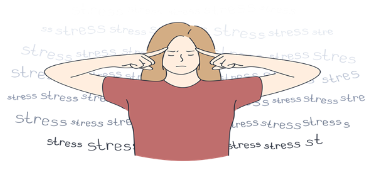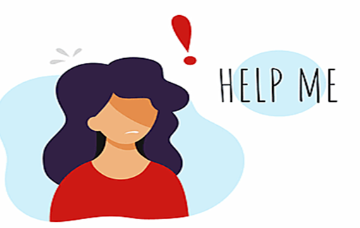【Learning points】
- Post-traumatic stress disorder (PTSD)is a mental health condition that's triggered by terrifying extreme or life-threatening events.
- Impairments in memory, emotional representation, and cognition: memory loss, insomnia, inability to sleep, loss of interest in daily activities, difficulties in interpersonal relationships, social isolation, withdrawal, etc.
- Provide care and seek professional assistance to help patients get out of the post-traumatic haze as soon as possible.
I.Introduction
As time goes by and climate change, lots of tragic events happen. However, after the end of the events, few people will be aware the survivors may suffer from post-traumatic stress disorder (PTSD) in their following life.
II.What is Post-traumatic stress disorder (PTSD)
Post-traumatic stress disorder (PTSD) is a mental health condition that's triggered by terrifying extreme or life-threatening events. Symptoms may include negative thinking and changes in physical and emotional reactions which can vary over time or vary from person to person and more than a month.
III.Signs and symptoms of PTSD
PTSD symptoms are generally grouped into four types:
- Intrusive memories: upsetting dreams or nightmares about the traumatic event.Avoiding activities that remind you of the traumatic event.
- Negative changes in thinking and mood:reliving the traumatic event as if it were happening again.Feeling Fear, anxiety, anger, depression ,or guilt. Being easily startled or frightened.Irritability, angry outbursts ,or aggressive behavior.
- Changes in physical and emotional reactions: trouble concentrating. Trouble sleeping.
- Normal daily problems:difficulty maintaining close relationships.Feeling detached from family and friends.Suicidal thoughts and actions.
Symptoms can vary over time or vary from person to person.

IV.Care plan for PTSD
- Assist the patient to complete the meaning of the event itself, or develop an adaptive response.
- Assist the patient's response to events to develop smoothly.
- It is necessary for the patient to describe the traumatic event and his feelings about the event.
- Provide timely assistance when the patient has nightmares, withdrawal and aggressive thoughts.
- Establish a trusting relationship with the patient, encourage the expression of thoughts and emotions, and assist in distinguishing between reality and fantasy.
- Assist the patient to understand the control of the results.
- Assist in overcoming emotional helplessness and loss of control, so that patients can work hard to participate in activities.
- Professionals assist in relaxation skills training and desensitization methods, and use relaxation skills training and desensitization methods to change the cognitive process of individuals and reduce fear and trouble.
- Understand them, and establish good interpersonal relationships. In addition, the support and love of family members is also an important factor.
V.Conclusion
Early detection of the patient's reactions after a stressful event, giving care and seeking professional assistance are helping for the patients to go through the post-traumatic haze as soon as possible.

VI.Reference
- 李佳純、馮翠霞(2020).急重症病人之焦慮、憂鬱與創傷後壓力症候群.護理雜誌,67(3),23–29。https://doi.org/10.6224/JN.202006_67(3).04
- 唐子俊(2020) ‧重大創傷後壓力症候群治療最新趨勢從心理治療到神經治療‧中華團體心理治療,26(3),9-14 。https://doi.org/10.30060/CGP.201009.0004
- 戴月明、楊斯年(2019).癌症病人之創傷後壓力症、憂鬱及自殺風險.源遠護理,13(2),5–7。https://doi.org/10.6530/YYN.201907_13(2).0001
創傷後壓力症候群 Post-traumatic stress disorder (PTSD)簡易測驗
Let's take a test to confirm that you have a thorough understanding.
評語
統計結果不開放
請登入後才可以評分
未登入或權限不足!
- 位置
-
- 資料夾名稱
- English
- 上傳者
- 李怡靜
- 單位
- 中榮護理衛教
- 英文名稱
- Post-traumatic stress disorder (PTSD)
- 分類
- 疾病
- 科別
- 精神科
- 癌症照護
- 否
- 建立
- 2024-01-24 14:01:09
- 制訂日期
- 2019-07-01
- 最近修訂
- 2024-03-19 11:52:00